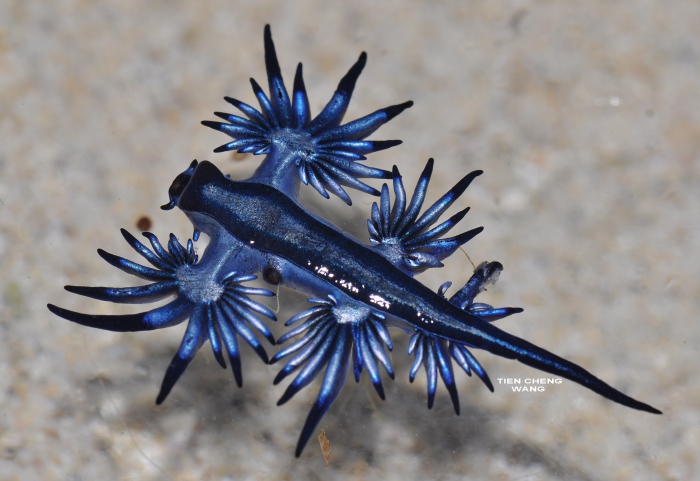
A spectacular-looking example of an animal in the plankton is Glaucus, a pelagic (open sea) sea slug. Sea slugs are nudibranchs, in the mollusc phylum. The blue glaucus (Glaucus atlanticus) is also called the blue dragon, sea swallow or blue angel.
The Beautiful Camouflage of Blue Glaucus
It may look dragon-like, but the blue sea dragon rarely grows to more than three centimeters long (about one inch). This tiny drifter lives on the surface waters of the Atlantic, Pacific and Indian oceans, using air bubbles to keep it afloat. It may look gaudy in photos, but the blue dragon’s coloration is an example of countershading: the bright blue helps it blend into the water’s surface, while its grayish underside helps it blend into the ocean when seen from below, serving as camouflage to predators from both the air above and the ocean below.
The blue sea dragon is part of the neuston, marine surface-dwelling organisms that are critical ecological links in the ocean food web. In fact, it has to live at the surface where it feeds on other animals in the neuston and mates there as well.
Stinging Cells from the Man-of-War
Floating on the surface of the ocean can be a dangerous life. The blue dragon does have formidable defenses should it encounter a predator: it has stinging cells stolen from bites of the Portuguese man-of-war, its favorite food. In the feeding process, Glaucus concentrates and stores those stinging cells into its tentacle-like cerata at the tip of its six appendages where it delivers strong stings to any predator that tries to munch on it. Watch this video about how that works.
Predators aren’t the only threat to blue sea dragons. A lot of ocean drifters have been found caught in the plastic floating at the ocean’s surface in the North Pacific Garbage Patch. The animals and the plastic are transported and concentrated by ocean surface currents into gyre, like the one in the north Pacific. Scientists don’t know what the long-term threat from plastic pollution is on the sea dragons.
















